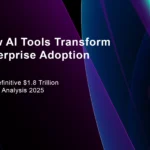The financial sector has embraced cloud computing for its speed, scalability, and ability to support real-time services across global markets.
From instant payments to AI-driven risk analysis, cloud platforms are powering innovation at a pace that was unimaginable a decade ago. But with opportunity comes exposure. Every new cloud service, API integration, and digital channel expands the potential attack surface for cybercriminals.
In this high-stakes environment, enhanced cloud security solutions have become a strategic imperative. They are not simply tools to prevent data breaches—they are essential frameworks for maintaining compliance, protecting customer trust, and ensuring uninterrupted business operations.
The Cloud’s Double-Edged Sword In Finance
Cloud technology has transformed financial services. Institutions can deploy new platforms in weeks instead of months, scale resources instantly to meet demand spikes, and empower customers to transact securely from any device. Yet, these same advantages come with inherent risks.
The very openness that makes the cloud efficient also makes it vulnerable. A single misconfigured storage bucket or unsecured API can expose millions of records. The 2019 Capital One breach—impacting over 100 million customers—serves as a stark reminder that cloud missteps can have devastating consequences. For financial institutions, where the stakes involve sensitive personal data, transaction histories, and even market-moving intelligence, the margin for error is effectively zero.
Core Threats Facing Financial Institutions In The Cloud
Data Breaches – Stolen customer data, payment information, and personally identifiable information (PII) are key assets for cybercriminals. They can be used for identity theft, unlawful transactions, and fraud via phishing.
Account Hijacking – Stolen credentials may enable a threat actor to directly access customer accounts or backend systems for unauthorized transactions or data alteration.
Insider Threats – Employees or contractors with access to sensitive systems who misuse credentials intentionally or unintentionally can result in major data loss.
The need for action is clear: IBM’s 2023 Cost of a Data Breach Report indicates that the financial industry ranks high for breach-related costs. In fact, the financial sector sustained an average cost of $5.9 million per breach in 2023, which is significantly higher than the global average.
What Differentiates Enhanced Cloud Security Solutions
Traditional security safeguards aren’t equipped to handle the increasing complexity of modern threats. New cloud security measures come packed with power to deal with the finance sector’s exacting needs:
Real-Time Monitoring and AI Detection – Uncover unusual patterns in traffic, user activities and transactions before they have a chance to cause harm
Complete Encryption Support – Keep financial data secure on the move and at rest
Identity and Access Management (IAM) – Authenticate users with more than one factor and define permissions based on roles, so that your network stays open only to authorised users
Conformidad – In-built PCI DSS, GDPR, SOX and other standards to comply with the protection of financial data
Zero Touch Procurement – Compatible with banking infrastructure in place, with quick and easy rollout
These measures don’t just block threats—they also enable a secure base for your operations to prosper.
Real-World Applications
- Banks – Securing online banking portals, mobile apps, and ATM networks against credential theft and malware.FinTech Startups – Protecting digital wallets, payment gateways, and API integrations from exploitation.
- Investment Firms – Safeguarding trading platforms and investor data from insider threats and cyber espionage.
- Insurance Providers – Defending policyholder data and claims management systems from ransomware and phishing attacks.
Choosing The Right Provider
Picking a security provider is as important as the technology itself. For financial institutions, that means looking for a partner who:
- Has a strong track record supporting financial cyber defense.
- Can scale to support rapid growth and ‘surges’ that can come with shifts in transaction volume.
- Provides 24/7 monitoring, incident response and expert support.
- Can deeply integrate with on-premises, hybrid and multi-cloud deployments.
Building Financial Resilience In The Cloud Age
Cybersecurity is no longer a cost center. Not in the cloud era, at least. Companies that take the offensive on cloud security investments aren’t simply protecting data—they’re protecting the trust, confidence, and operational continuity on which they rely.
The best time to act is well before a breach happens, not after. By embedding powerful cloud protection capabilities into the fabric of their financial operations, leaders can be confident that their companies remain agile, compliant, and solid no matter what cyber criminals on the prowl dream up next.





